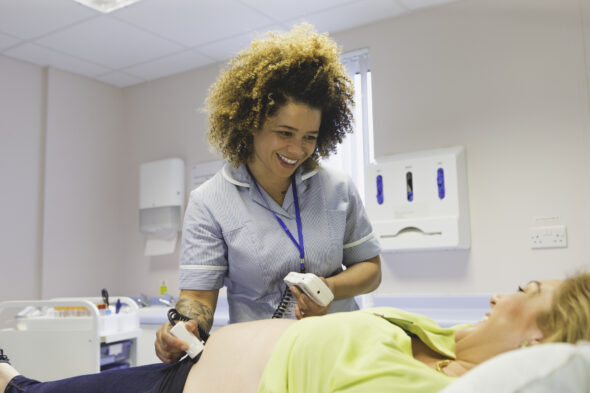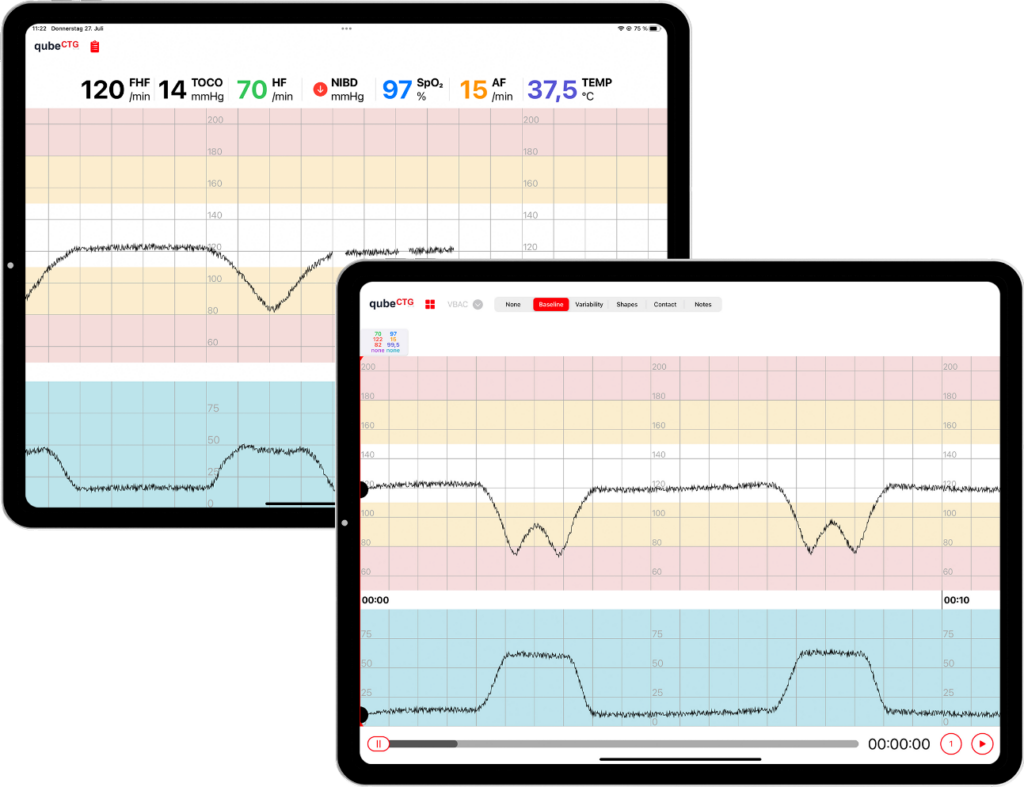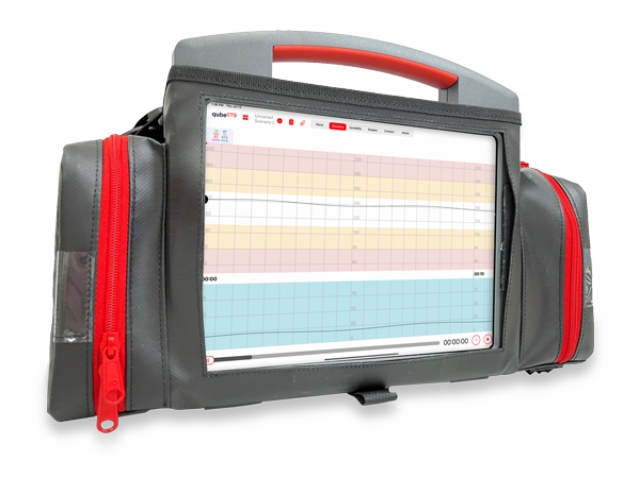qubeCTG
Discover the power of real-time cardiotocography (CTG) monitoring, providing a comprehensive view of the fetal heart rate and maternal contractions during labor and delivery. With qubeCTG, you can now gain invaluable insights into the intricacies of childbirth, honing your CTG interpretation skills for real-world scenarios.

qubeCTG:
Real-time cardiotocography monitoring system
Our brand-new qubeCTG is used in simulated obstetric environments during labor and birth to display the fetal heart rate and maternal contractions. It features a library of pre-programmed scenarios that guide students through the fundamentals to advanced scenarios with complex birth issues.

qubeCTG
$700 / Year subscription
qubeCTG is the ultimate solution for simulated birthing environments, revolutionizing how you learn and practice CTG monitoring and decision-making.
This bundles includes the qubeCTG monitor and the qubeCTG controller!
qubeCTG Features Overview
- Create, edit, and save your scenarios
- Access our pre-programmed scenarios
- Real waveform technology (RWT)
- Add slow-downs, accelerations, and contractions with a fingertip
- Pause, rewind, and fast-forward with a finger swipe
- Manage maternal vital signs
- Portable CTG training system

Elevate Obstetric Training with Advanced CTG Simulation!

Our cutting-edge technology comes with a library of pre-programmed CTG scenarios. From mastering the fundamentals to tackling advanced CTG interpretations with complex birth problems, qubeCTG guides you every step of the way, empowering you to become a proficient and confident midwife.
Join the ranks of satisfied medical professionals worldwide who have already experienced the transformative benefits of qubeCTG for CTG training. Take charge of your CTG education today and be a part of the future of healthcare with advanced CTG simulation!
Don’t miss this opportunity to revolutionize your CTG training journey. Embrace the future of obstetric training with qubeCTG. Get started now!
Enterprise Solutions
Let’s go deeper into Simulation
If the current software bundles don’t quite meet your needs, contact our sales team for a tailored enterprise model that fits your requirements perfectly.
Let’s get in touch
Understanding Cardiotocography (CTG) and Its Applications
Introduction
Cardiotocography, commonly referred to as CTG, is a vital medical procedure that plays a crucial role in monitoring the health and well-being of both the mother and the unborn baby during pregnancy. This non-invasive technique provides healthcare professionals with valuable insights into the fetal heart rate and uterine contractions, enabling timely intervention and ensuring a safe pregnancy journey. In this article, we delve into the details of what CTG is and its various applications in modern obstetrics.
What is Cardiotocography (CTG)?
Cardiotocography, or CTG, is a medical diagnostic technique that involves the simultaneous monitoring of the fetal heart rate (FHR) and uterine contractions. This procedure utilizes specialized equipment to record these vital parameters, providing a comprehensive assessment of the baby’s well-being and labor progress.
Key Components of CTG Monitoring
1. Fetal Heart Rate (FHR) Monitoring: The CTG procedure tracks the fetal heart rate, which is an essential indicator of the baby’s cardiovascular health. Deviations from the normal heart rate pattern can signal potential distress or other complications.
2. Uterine Contractions Monitoring: CTG also records the frequency, duration, and intensity of uterine contractions. These contractions play a pivotal role in the labor process, and monitoring them helps healthcare providers gauge the progression of labor and make informed decisions.
Applications of CTG
1. Antenatal Monitoring: CTG is frequently used during the later stages of pregnancy to assess fetal well-being and ensure that the baby is receiving an adequate oxygen supply. This monitoring is crucial in high-risk pregnancies, where the potential for complications is elevated.
2. Intrapartum Monitoring: CTG is extensively employed during labor to assess the baby’s response to uterine contractions. It aids healthcare professionals in detecting signs of distress, such as a decreased heart rate or irregular patterns, allowing for timely interventions to prevent potential complications.
3. Assessing Fetal Health: CTG helps healthcare providers identify any signs of fetal distress, enabling them to make informed decisions about the need for interventions, such as assisted delivery or cesarean section, to ensure the safety of both the mother and the baby.
4. Monitoring Pregnancy Complications: In pregnancies with conditions like preeclampsia or gestational diabetes, CTG can provide valuable information about the baby’s well-being and assist in managing these complex situations.
Cardiotocography (CTG) is a vital tool in modern obstetrics, allowing healthcare professionals to monitor fetal well-being and uterine contractions throughout pregnancy and labor. By providing real-time insights into the baby’s heart rate and uterine activity, CTG enables timely interventions and informed decision-making, ultimately contributing to safer pregnancies and healthier outcomes for both mother and child. If you’re expecting, discuss the importance of CTG monitoring with your healthcare provider to ensure the best care for you and your baby.




